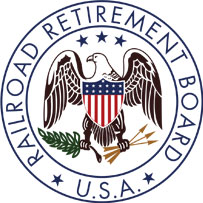Railroad Disability Benefits
Railroad Retirement Benefits typically follow the same definition of disability as the Social Security Administration. To be eligible for a railroad disability, your disability must be severe enough to prevent you from performing work that brings in over a certain dollar amount per month. For 2020, the dollar amount equates to $1,260 per month (or $2,110 per month for those who are blind).

To qualify for the full railroad disability amount, a railroad worker must have at least ten years of covered employment. If someone has only five years of employment with the railroad, then they may qualify for RRB disability benefits if they have earned at least 20 Social Security work credits from the last ten years.
Railroad workers covered by RRB are also eligible for the occupational disability benefit. This is not the case with Social Security disability. This benefit helps people who can work a little bit but have a disability that prevents them from doing their routine duties. To qualify for this benefit, the railroad worker must have at least 20 years of covered service and be currently connected with the railroad industry or be between the age of 60 and full retirement age with at least ten years of covered railroad employment and a current connection to the railroad industry.
Railroad Disability Benefits
If you are retiring from the U.S. Railroad Retirement Board (RRB), you will want to know how your benefits will work with Medicare Parts A and B. The RRB will manage your insurance and retirement benefits, including railroad disability to the railroad workers throughout the country. Instead of getting retirement benefits from the U.S. Social Security Administration as other workers do, the RRB provides railroad workers and their families with retirement benefits, along with unemployment and sickness benefits.
Medicare will still be responsible for the individual’s health care benefits. Your Medicare card will look slightly different. See this example – Medicare RRB card will be on the left:

If you are going to be eligible for Railroad Medicare soon and you are a qualified railroad retirement beneficiary, read below to help you understand how your retirement benefits work with Medicare.
MEDICARE COVERAGE FOR RAILROAD RETIREES
When you become eligible for Social Security benefits or Railroad Retirement Benefits, you will qualify for Medicare due to age or disability. This happens when you turn 65 years old, or you may be under 65 and qualify due to having a disability. If you are enrolling in Medicare as a current or former railroad worker, you will need to follow specific steps to enrollment in Medicare.

Your enrollment in Original Medicare is handled by the Railroad Retirement Board not by the Social Security Administration. If you receive Railroad Retirement benefits or disability annuity benefits from the railroad at the time of eligibility for Medicare, you are automatically enrolled in Medicare Parts A and B by the RRB.
After the RRB automatically enrolls you, you receive your Medicare card together with a letter from the RRB explaining that you have been enrolled in Original Medicare Parts A and B. Your Medicare card is like the new Medicare cards that all beneficiaries receive, with the exception that “Railroad Retirement Board” is printed in a red banner at the bottom of the card.

If you are 65 and eligible for Medicare but not receiving RRB benefits at the time, contact your local field office to get enrolled in Medicare.
If you have a disability and are younger than 65, your eligibility for Medicare health care coverage differs from someone who is receiving Social Security benefits. Your eligibility depends on the RRB classification of your disability, which will determine if you are eligible for Medicare, and when it will become effective.
In the event of a disability, you will want to contact your local RRB field office to discuss the details. However, if you have an end-stage renal disease (ESRD) and qualify for Medicare, you must go through the Social Security Administration even if you are employed by the railroad.
The RRB is responsible for collecting your Original Medicare premiums if you receive Railroad Retirement Board benefits or annuity checks for railroad disability. Your Medicare Part B premium, and Part A if you do not qualify for premium-free Part A coverage, are deducted from your check each month, automatically.
When you visit physicians or other health care providers, they must send their Part B service charges to a separate contractor who has been selected by the RRB. It is important for you to inform your health care providers that you have Railroad Medicare so the invoices can be paid by Medicare within a reasonable amount of time.
Medicare offers coverage to railroad employees just as it does for people who have Social Security. The payroll taxes of railroad employees include railroad retirement and Medicare hospital insurance taxes.

You have choices
When you understand the basics of Medicare, you will quickly learn that there isn’t a “one size fits all” plan. We are here to educate you about all your choices.
Choices include:

Original Medicare:
coverage managed by the federal government RRB. Generally, there is a cost for each service. Original Medicare includes:
- Part A: Inpatient hospital stays, care in a skilled nursing facility, hospice care, and some home health care.
- Part B: Certain doctors’ services, outpatient care, medical supplies, and preventive services
Original Medicare with a stand-alone prescription drug plan (Part D) and/or a
Medicare supplement insurance plan.
Medicare Advantage (Part C) plan:
a type of Medicare health plan offered by a private company that contracts with Medicare to provide you with all your Part A and Part B benefits. Most Medicare Advantage plans offer prescription drug coverage, vision, hearing, and dental benefits.
NEXT STEPS
Once you are enrolled in Medicare, you will want to discuss your options with a licensed broker. Contact our office and we will help you unwind the complexities of Medicare.
We’re here to help! Call us today.








Share your thoughts
Leave your comments